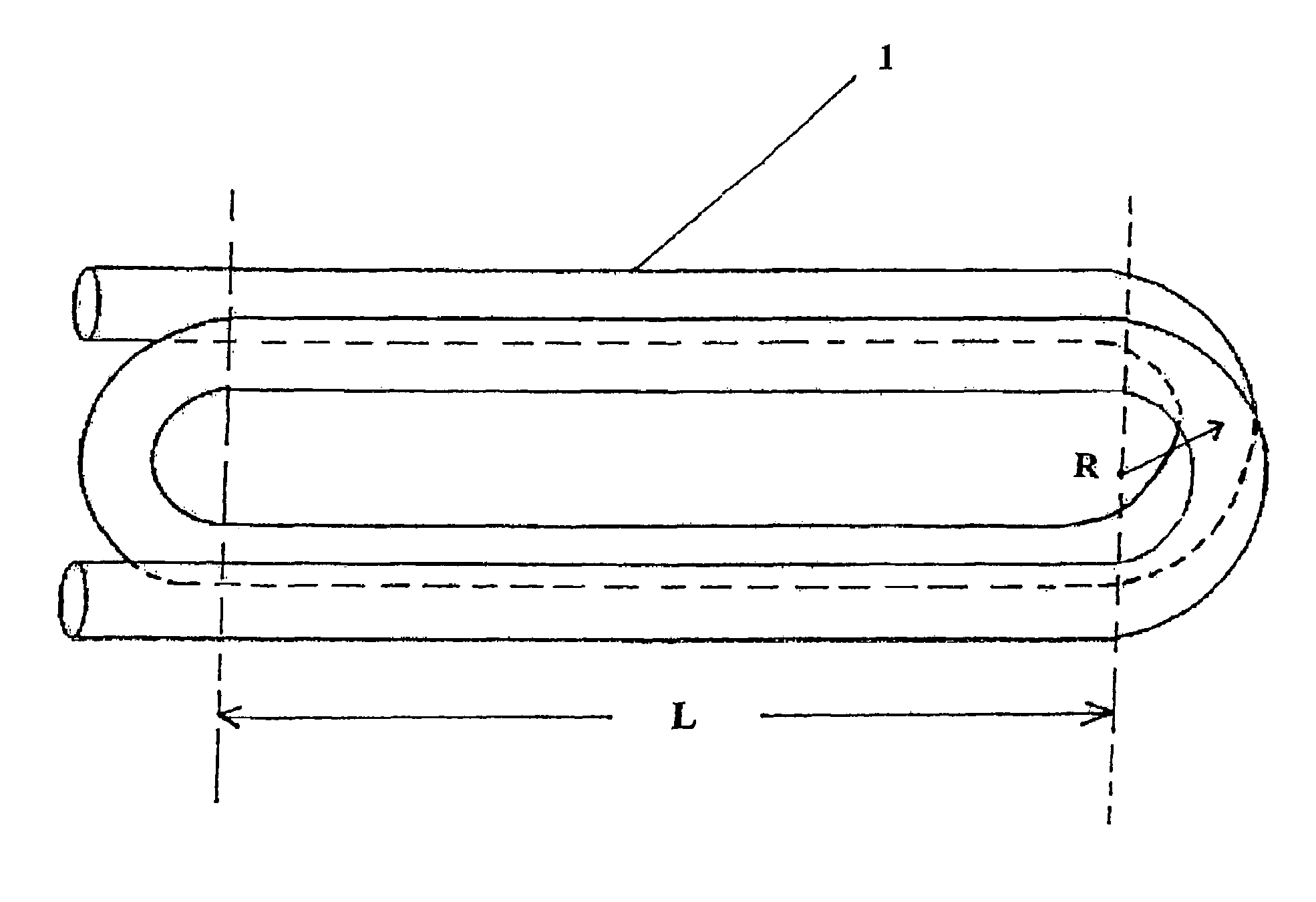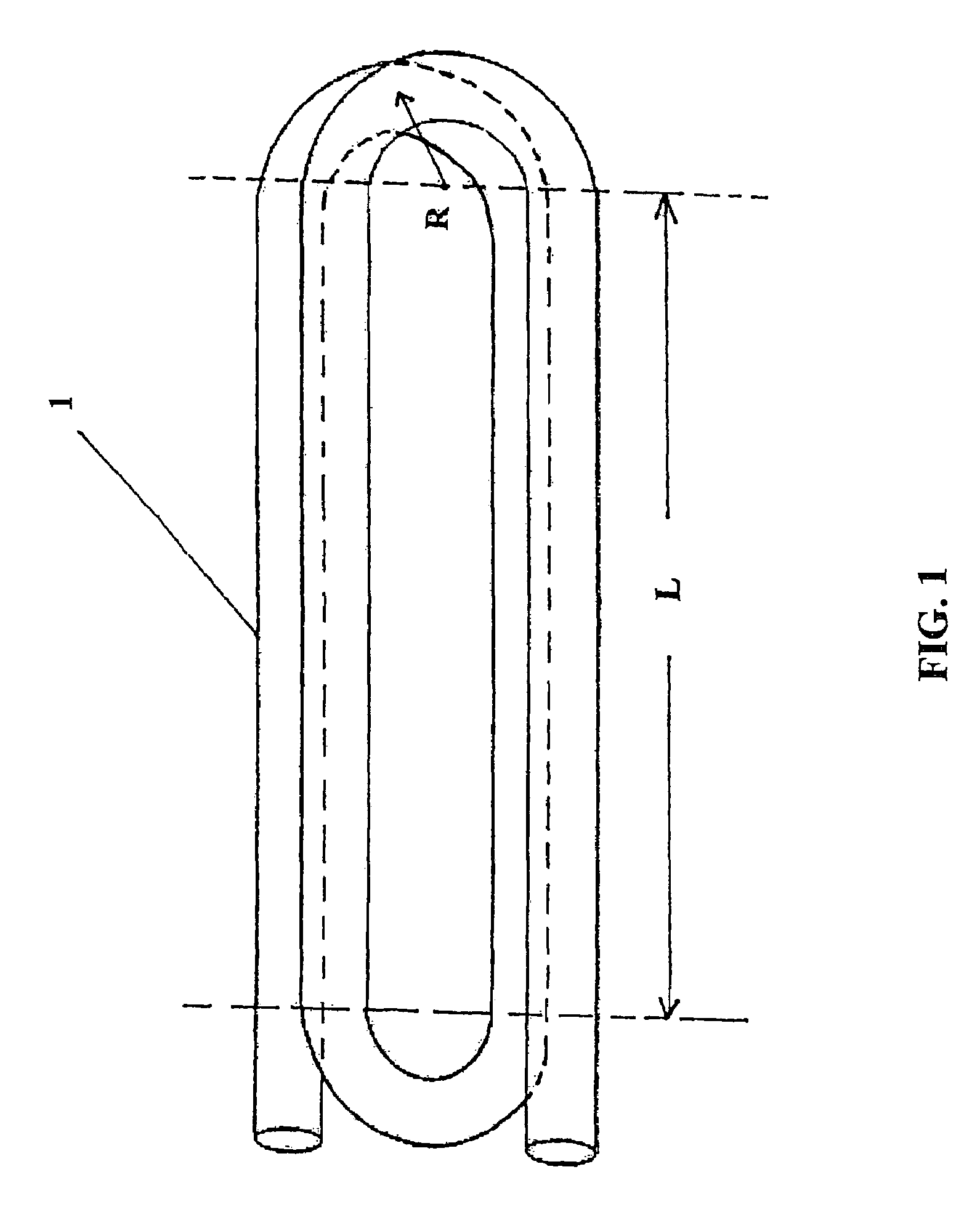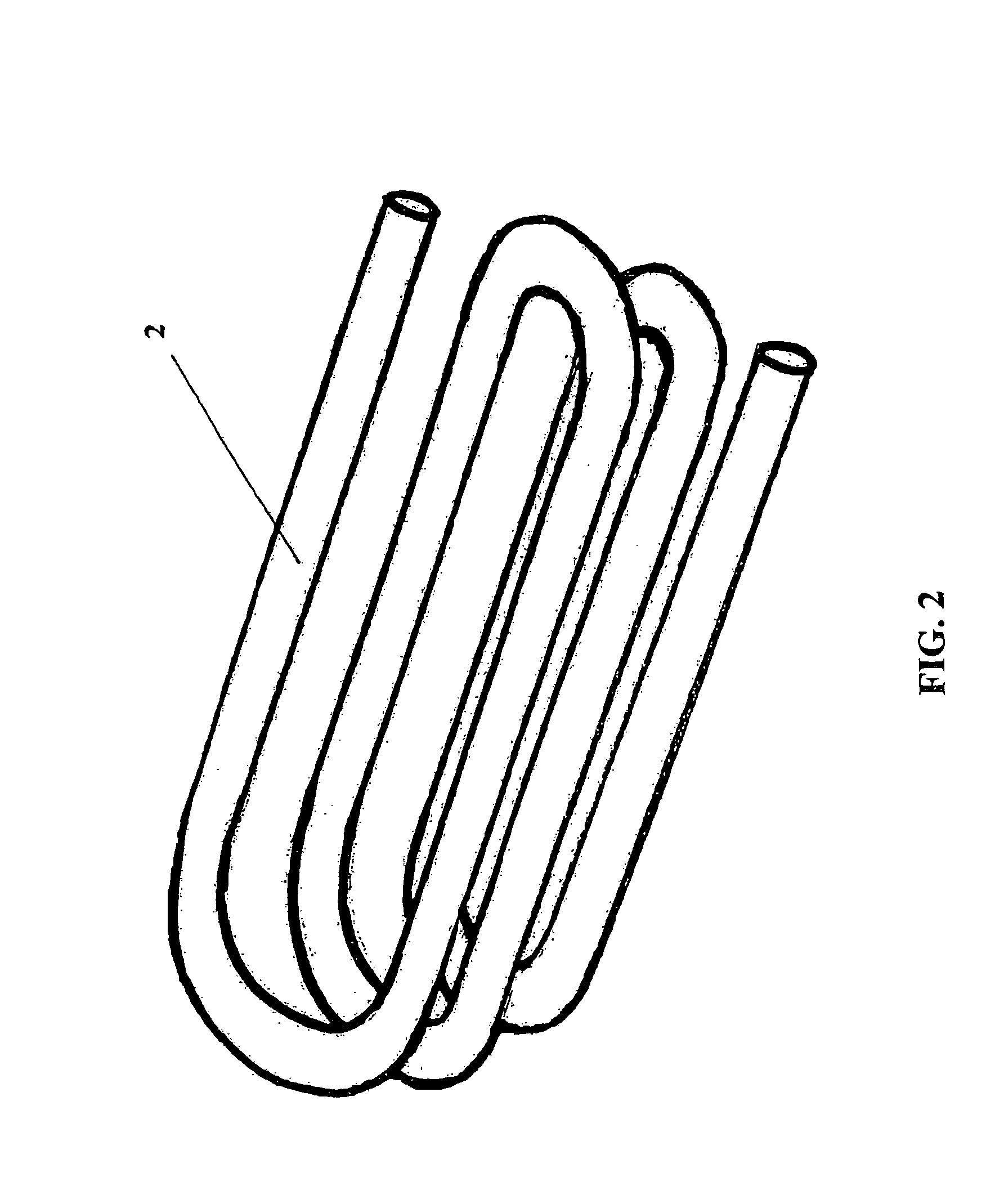Method for detecting a gas species using a super tube waveguide
a gas species and super tube technology, applied in the field of gas analysis, can solve the problems of non-specificity problems, long-term drifts of one gas species without exception, and the use of white cells has been restricted mainly, and gas analyzers for commercial use seldom incorporate very long path-length sample cells for such purposes
- Summary
- Abstract
- Description
- Claims
- Application Information
AI Technical Summary
Benefits of technology
Problems solved by technology
Method used
Image
Examples
Embodiment Construction
[0026]For over two decades, the present inventor diligently worked on simple, rugged and low-cost NDIR gas sample chambers culminating in the so-called “wave-guide” sample chamber invention disclosed in U.S. Pat. No. 5,163,332 (1992). Indeed, for gases with moderate to strong absorption bands in the mid-infrared spectral region like CO2 (4.26 μm), H20 (2.7 μm), CH4 (3.4 μm) etc., the optimum and simplest gas sample chamber is a hollow straight metallic tube with arbitrary cross-section but speculatively reflective inner walls very much likened to a standard microwave wave-guide. Today after over a decade has gone by since the advent of the “wave-guide” gas sample chamber (a.k.a., “The Tube”), most of the reliable, rugged, sensitive and low-cost CO2 sensors use this design, rendering a host of new applications, including faster and false-alarm resistant fire detectors and Demand Control Ventilation (DCV) strategies for saving energy in high-rise office and commercial buildings, many ...
PUM
 Login to View More
Login to View More Abstract
Description
Claims
Application Information
 Login to View More
Login to View More - R&D
- Intellectual Property
- Life Sciences
- Materials
- Tech Scout
- Unparalleled Data Quality
- Higher Quality Content
- 60% Fewer Hallucinations
Browse by: Latest US Patents, China's latest patents, Technical Efficacy Thesaurus, Application Domain, Technology Topic, Popular Technical Reports.
© 2025 PatSnap. All rights reserved.Legal|Privacy policy|Modern Slavery Act Transparency Statement|Sitemap|About US| Contact US: help@patsnap.com



